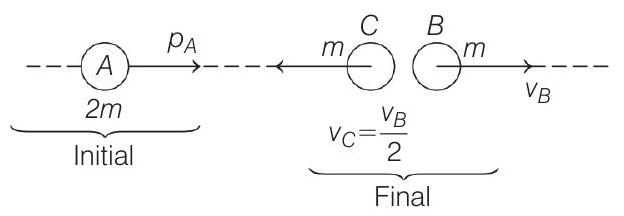Modern Physics 7 Question 83
13. A nucleus
(Main 2019, 8 April II)
(a)
(b)
(c)
(d)
Show Answer
Solution:
- Let
So, the given situation can be shown in the figure below

Now, according to the conservation of linear momentum, Initial momentum
So, momentum of
or
and
or
From the relation of de-Broglie wavelength, i.e.
where,
So, for
From Eq. (v),
Similarly, for
[using Eq. (iv)]
Similarly, from Eq. (v),






